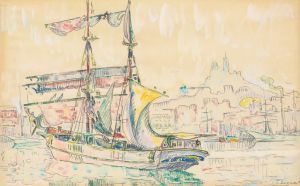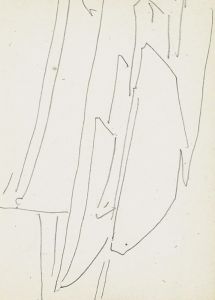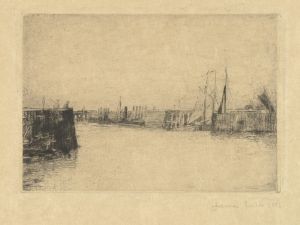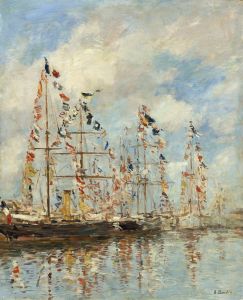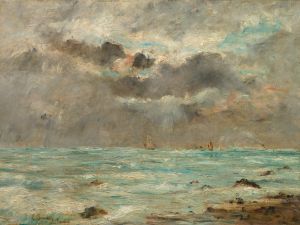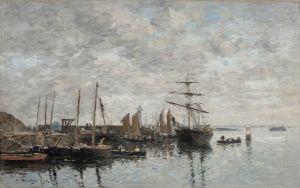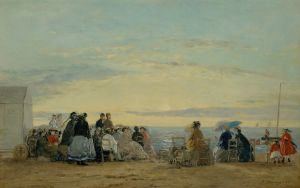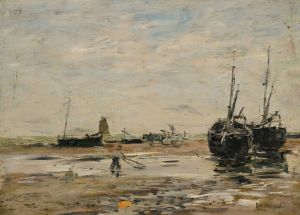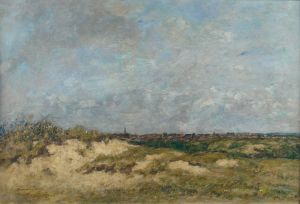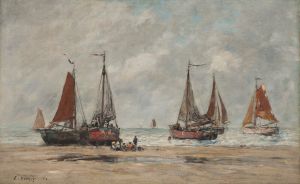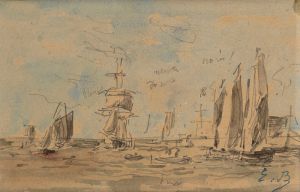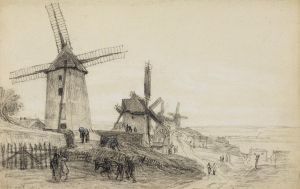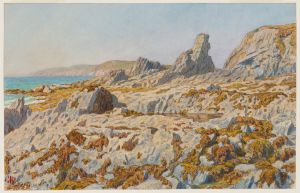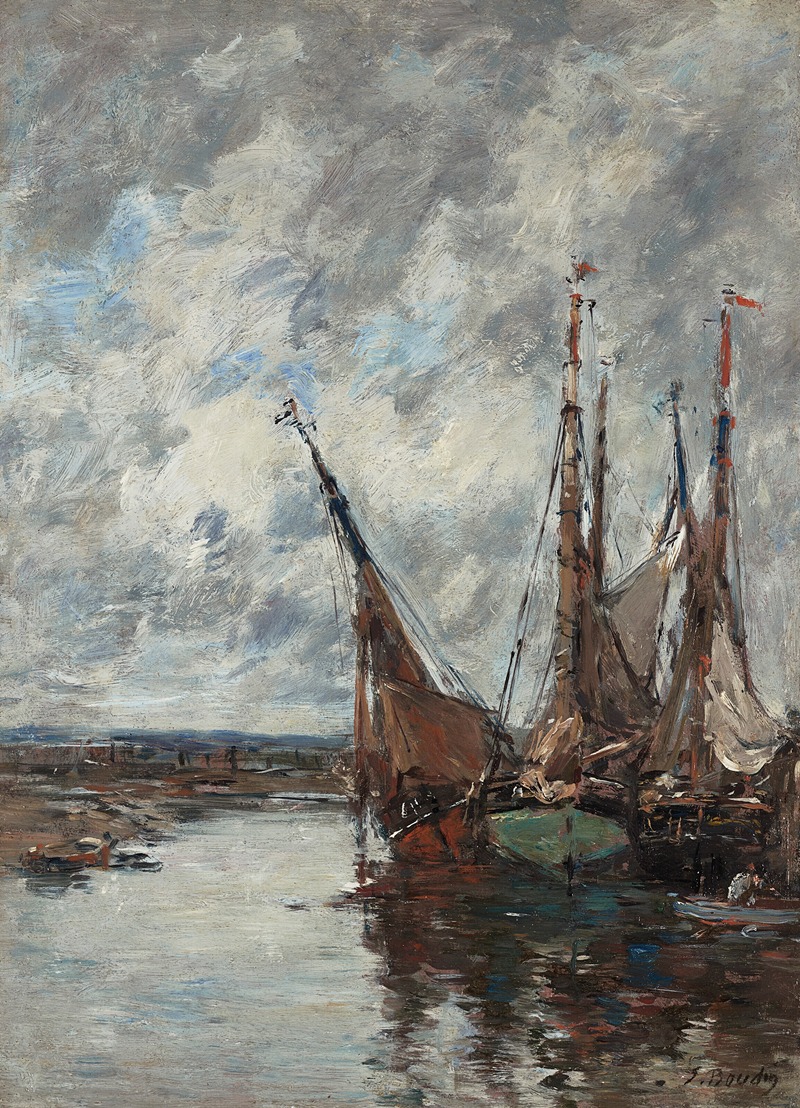
Trouville, voiliers échoués
A hand-painted replica of Eugène Boudin’s masterpiece Trouville, voiliers échoués, meticulously crafted by professional artists to capture the true essence of the original. Each piece is created with museum-quality canvas and rare mineral pigments, carefully painted by experienced artists with delicate brushstrokes and rich, layered colors to perfectly recreate the texture of the original artwork. Unlike machine-printed reproductions, this hand-painted version brings the painting to life, infused with the artist’s emotions and skill in every stroke. Whether for personal collection or home decoration, it instantly elevates the artistic atmosphere of any space.
"Trouville, voiliers échoués" (Trouville, Beached Sailboats) is a painting by the French artist Eugène Boudin, who is widely recognized as one of the precursors of the Impressionist movement. Boudin was born on July 12, 1824, in Honfleur, a port town in Normandy, France, and he developed a profound connection with the sea and coastal landscapes, which became a recurring theme in his work.
Eugène Boudin is particularly noted for his ability to capture the transient effects of light and atmosphere, a skill that is evident in "Trouville, voiliers échoués." This painting depicts a scene in Trouville-sur-Mer, a coastal town in Normandy that was a popular destination for artists and tourists in the 19th century. Trouville was known for its picturesque beaches and bustling port, making it an ideal subject for Boudin's plein air painting technique.
The painting shows several sailboats that have been beached, likely due to the low tide. The composition is characterized by its loose brushwork and the artist's keen attention to the interplay of light and shadow. Boudin's use of color is subtle yet effective, capturing the muted tones of the sand, the reflective quality of the water, and the varying hues of the sky. The boats are depicted with a sense of realism, yet the overall impression is one of spontaneity and immediacy, as if the scene was captured in a fleeting moment.
Boudin's approach to painting was innovative for his time. He often worked outdoors, directly observing the natural environment, which allowed him to render the changing conditions of the sky and sea with remarkable accuracy. This method was a significant departure from the studio-bound practices of many of his contemporaries and laid the groundwork for the Impressionist movement. Artists such as Claude Monet, who was influenced by Boudin, would later adopt and expand upon these techniques.
"Trouville, voiliers échoués" exemplifies Boudin's mastery in depicting maritime scenes and his ability to convey the atmosphere of the Normandy coast. The painting not only reflects the physical characteristics of the location but also evokes a sense of tranquility and the passage of time. Boudin's work was well-regarded during his lifetime, and he exhibited regularly at the Paris Salon. His contributions to art were recognized by his peers, and he was awarded the Légion d'honneur in 1892.
Today, Eugène Boudin's paintings are held in high esteem and can be found in major museums around the world, including the Musée d'Orsay in Paris and the National Gallery of Art in Washington, D.C. "Trouville, voiliers échoués" remains a testament to Boudin's skill and his enduring influence on the development of modern art.





